Conservation: Before and After
Published: Friday, 4th September 2020 06:47 AM
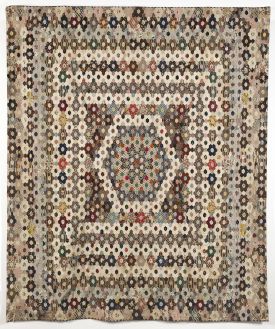
Theme: Conservation: Before and After
Historic textiles are beautiful objects, and provide an interesting gateway to explore our past. Unfortunately, as practical, domestic objects (and due to their organic nature), they are subject to deterioration and don’t always survive in the best condition. Conservation helps to preserve historic objects and elongate their life, enabling them to be displayed and exhibited so we can continue to appreciate and learn from them. This blog post looks at some before and after photos, to show the amazing work of professional conservators and our in-house volunteers, and what they can do to improve the appearance, condition and stability of fragile textiles.
This first piece was conserved in 2009 with the aid of a grant from the Association of Independent Museums. It is a printed cotton hexagons coverlet, which has the embroidered name and date in blue thread on a linen tape on the reverse of the piece, ‘Mary Prince, 1811’. The hexagons have been arranged in light and dark frames, and fabric analysis has shown that the centre piece was most likely replaced at a later date, as those fabrics were made using a lapis dyeing technique that was not invented at the supposed time of completion. Before this piece was conserved, many of the brown fabrics were in a poor condition, as the iron mordant used to make the fabric had eaten its way through the cotton. There were 85 areas of damage, making this a very fragile piece. The conservation stabilised the overall pH of the coverlet, added support fabrics to the damaged areas and added a linen backing to make the patchwork more stable for display.
This wonderful cigarette silks tea cosy was featured a few weeks ago in our Tea Cosies week, and dates from the early 20th century. Silk can be a fragile fabric, and Victorian silks are notorious for shredding due to the combination of chemical dyes and ‘weighting’ in metal solutions. The printed silks were not too bad, but the gathered ruffle trim needed conservation. This item was professionally cleaned and the fragile areas netted, and a bespoke mount made to support the items shape.
This double Irish chain patchwork quilt was made in 1872 from a variety of printed cotton squares with plain white/cream cotton centres to the chain design, and a Turkey Red central block. The centre has an embroidered inscription which reads ‘Betsy Jane Cope Hunmanby Age 13’. Many of the purple and brown cottons had deteriorated, most probably due to the iron mordant that was used in conjunction with madder to make the colour on the fabric. The quilt was conserved by our conservation volunteer, Meg Bagnall. She netted the vulnerable areas, which meant the piece is now stable enough to be exhibited for short exhibitions.
This early 19th century crib or cot coverlet is made of late 18th century and early 19th century printed cottons. The design alternates 'Trip around the world' blocks with squares on point inside larger squares. The coverlet also has four applique star motifs. This very beautiful and intricate piece was spattered with white paint splashes and the outer brown printed cotton border was deteriorating and flaky. It was professionally conserved, netted and stabilised, and its condition is now much more stable to ensure its preservation for future generations.
The Red Manor House Coverlet is one of our star pieces, and as an applique piece we are fortunate that the backing fabric is very stable (if a little grubby on the reverse). The front printed cottons were mainly in a good condition as well, but there were a few areas, particularly some flower petals and the duck motifs in the centre, where the fabric had disintegrated. These areas were netted in-house by the curator, to prevent any further deterioration and ensure the piece was safe and stable for exhibition.
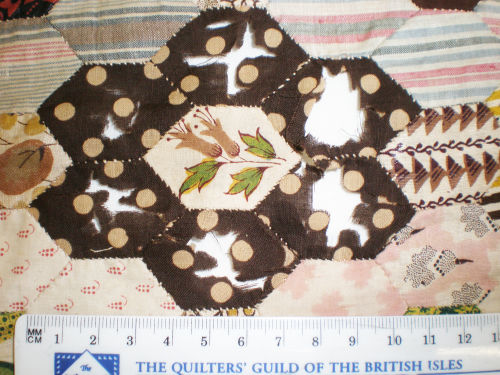 Mary Prince Before conservation
Mary Prince Before conservation
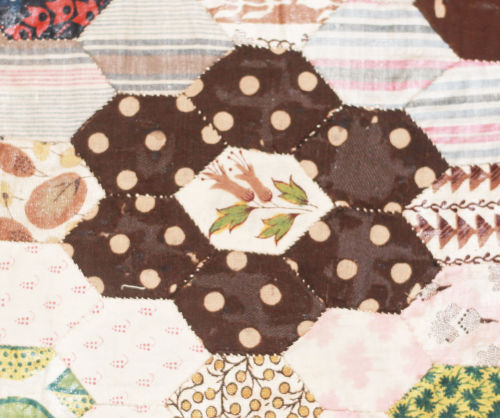 Mary Prince Coverlet after conservation
Mary Prince Coverlet after conservation
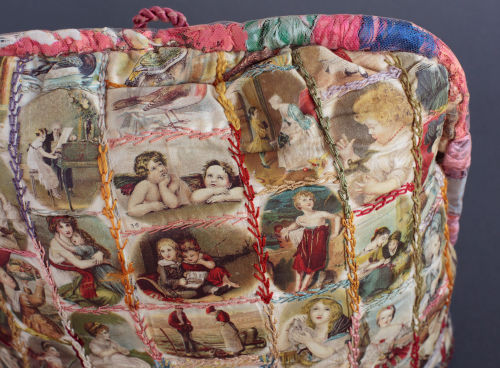 Cigarette Silks Tea Cosy netted top edge
Cigarette Silks Tea Cosy netted top edge
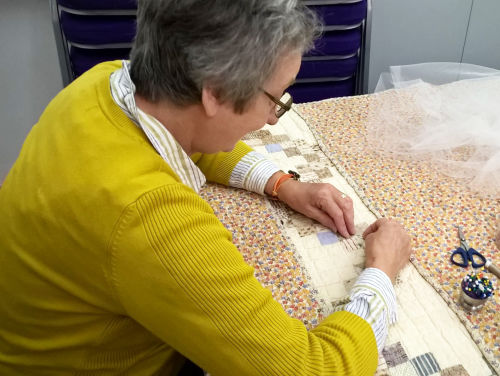 Betsy Cope Quilt being conserved
Betsy Cope Quilt being conserved
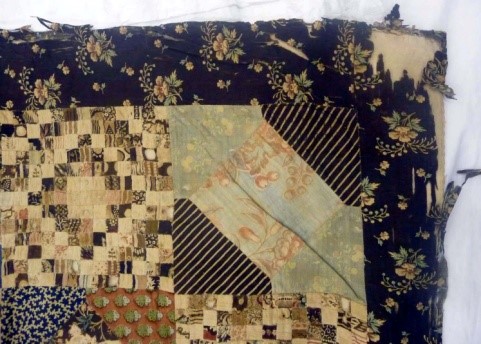 Original damage to the Crib Coverlet
Original damage to the Crib Coverlet
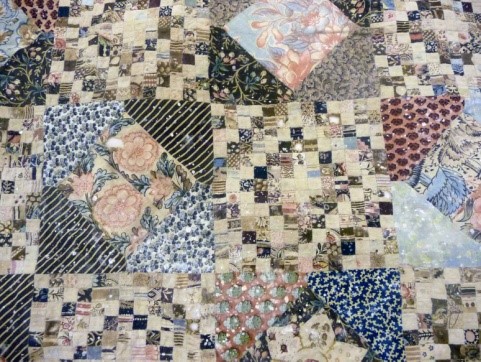 Paint damage to the Crib Coverlet
Paint damage to the Crib Coverlet
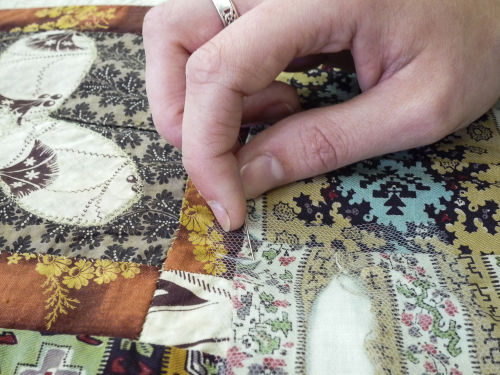 The Red Manor House Coverlet being conserved
The Red Manor House Coverlet being conserved